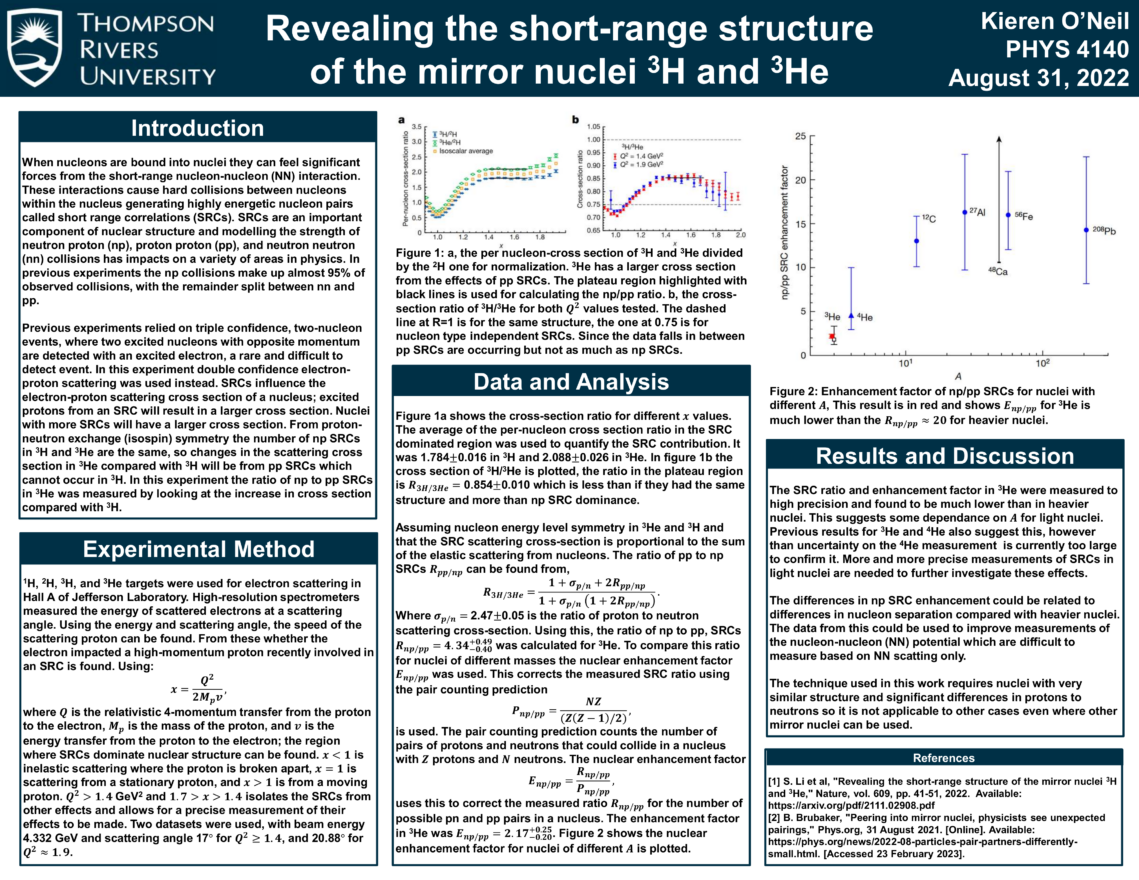Evaluating Existing Research
I have included evidence of meeting this criterion below with literature reviews as part of proposals and research methods coursework.
Literature Reviews, Reports, and Papers
For the UREAP research program funding application, I coauthored a literature review section. The key sections are 2.2 literature review and 2.7 references.
Research Methods Courses with Literature Reviews
As part of my coursework I have evaluated existing research for a final project several times, these are listed below.
PHYS 3500 Selected Topics in Physics: Particle Physics final report
Review report on the ALPHA-g experiment (Antihydrogen Laser Physics Apparatus). The project was to explain the experiment design, data, and results of a recent particle physics experiment. The key sections are II. Antimatter and its properties, III. Experiments with antimatter, and IV. The ALPHA experiment.
PHYS 4140, Radioactivity and Nuclear Physics, final poster
A poster reviewing of the published results of the Tritium Helium-3 mirror nuclei experiment which investigated short range correlations of nucleons. It provides an overview of the experiment design and results from the literature.

PHYS 3400, Principles and Applications of Quantum Mechanics I, final report
A review of interpretations of quantum mechanics. This report gives an overview of the field of interpreting quantum mechanics. It starts from the physical reasons why quantum mechanics needs interpretation, the history of quantum mechanics, and includes details of several interpretations. The key section is IV, Contemporary views.
PHYS 4480 Directed Studies in Physics, Statistical Mechanics final report (in progress)
The final report is on the Ising model of ferromagnetism, it includes a literature review of the Ising model with solutions to example problems on ferromagnetism in iron. It also includes simulations of iron magnets at different temperatures to model the Curie temperature. The image below shows simulations of ferromagnets at different temperatures. The low temperatures (T = 0.1, 0.5) are less than the Curie temperature and have a large net magnetism (B). The higher temperatures (T = 1, 2, 4) are above the Curie temperature and have little net magnetism.

